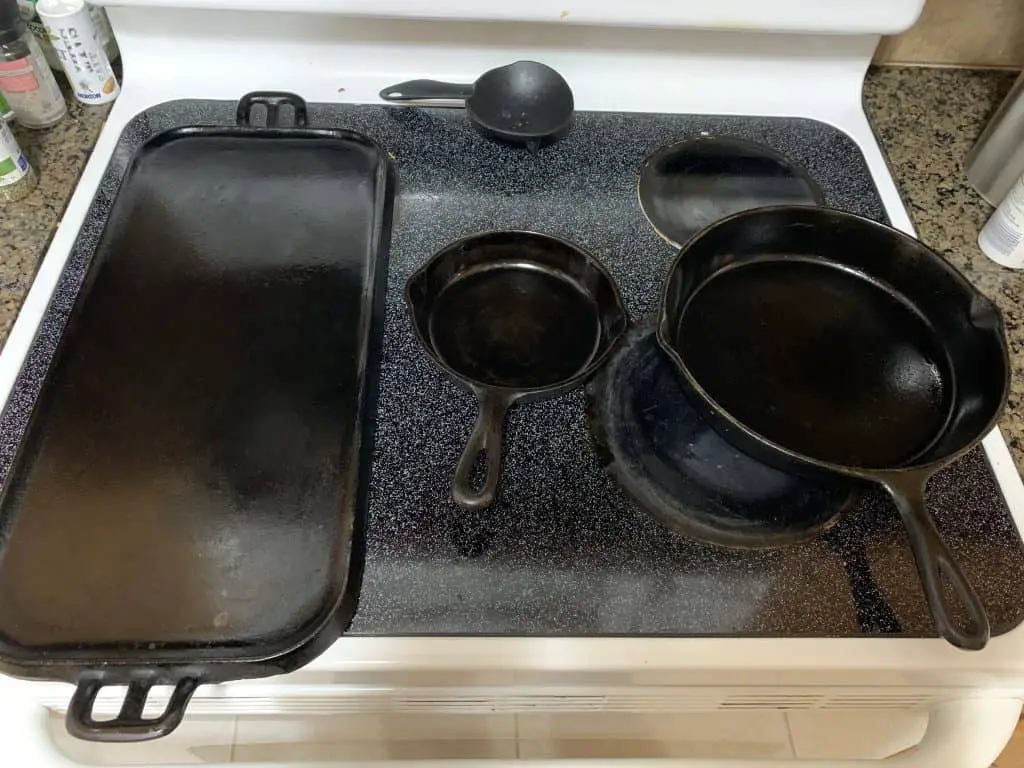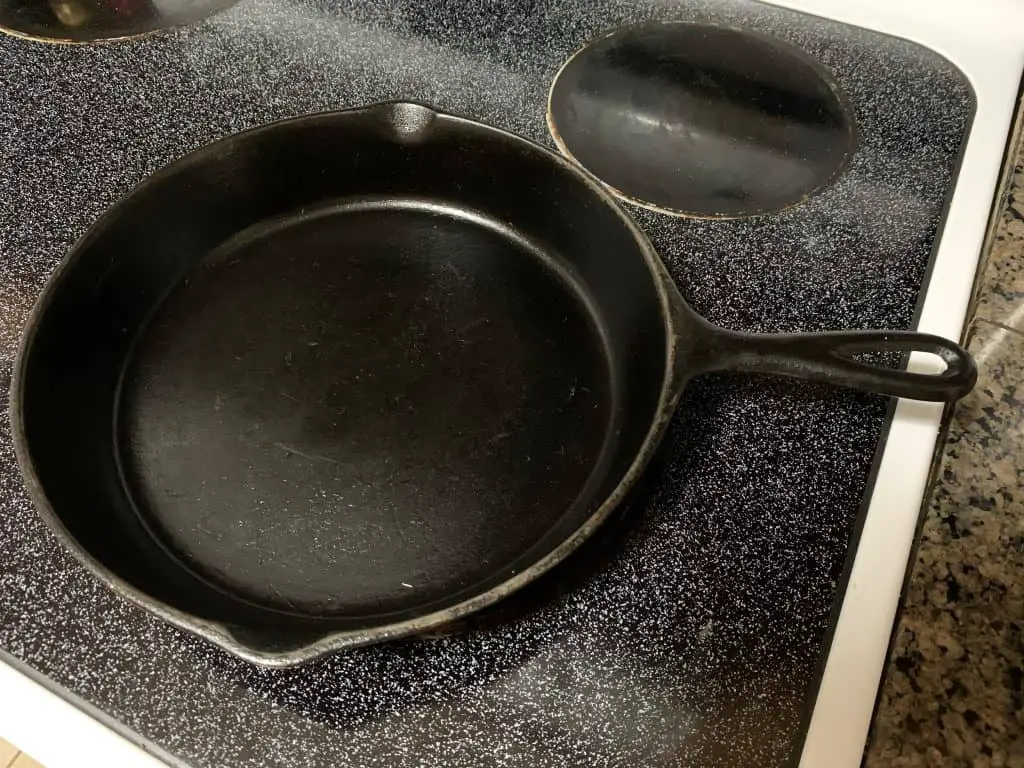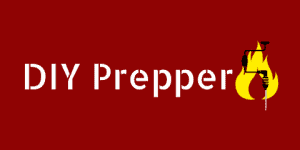Cast iron cookware has been around for centuries. It is an excellent addition to any kitchen, especially if you are a prepper.
Cast iron is an excellent choice for preppers because it can be used at home and off-grid. You can use it with modern ovens and stovetops as well as over an open flame. Cast iron is also extremely durable and can last a lifetime or more.
This article will be dedicated to everything that a prepper needs to know about cast iron cookware. I’ll go over the specific pieces that you may need, what makes cast iron a good choice for preppers, and how to maintain it.

Cast-Iron Cookware Every Prepper Needs
Cast iron cookware is available in everything from a basic skillet all the way to specialty items such as fajita sets. Here are the items that a prepper (and most other people) would find the most useful.
Skillet with Lid
The first piece of cast iron that a prepper should get is a skillet. Cast iron skillets can be used to prepare various foods and even baking. My favorite use for mine is to brown ground beef and heat pasta sauces. I have also used it to heat tortillas and make grilled-cheese sandwiches.
When selecting a skillet, start with one that is 10 inches wide. A skillet this size will allow you to perform common cooking tasks such as browning meat and sautéing. It is also used in many common recipes, such as this one for cornbread.
The skillet that I have is a vintage Lodge Number 7. It is around 10 inches wide at the top and 1 3/4 inches deep. It fits my needs perfectly. The only thing that I would change about it is I would love to have a lid to go with it.
You can find a high-quality cast-iron skillet by clicking here.
Dutch Oven
The piece of cast-iron that every prepper should have is a Dutch Oven. You can use it to make soups, bread, and many other dishes. I have even seen a recipe for Dutch Oven Lasagna, which you can find by clicking here.
Dutch ovens are basically a large pot with a lid and come in many different sizes and variations. A 6-quart Dutch oven is a good size for most people. It is small enough to move around easily yet large enough to hold plenty of food. However, you may want to consider a larger one if you expect to be cooking for a lot of people.
Preppers should consider two main types of cast-iron Dutch ovens. The first one has a flat bottom and may or may not have a hanging bail as a handle. This is a good choice when you plan on cooking indoors in an oven.
You can find a 6-quart Dutch oven by clicking here.
Dutch ovens such as this are available in enameled varieties as well. The enamel coating is both non-stick and non-toxic. The main drawback to enameled cast iron is that it isn’t as durable as non-enameled varieties.
The other type of Dutch oven that preppers should consider is a camper’s Dutch oven. These have legs on the bottom and a lid that can hold coals. This will allow you to place coals all around the Dutch oven so that the heat distributes evenly. As the name suggests, this is a good option if you are camping or off-grid. They also feature a hanging bail that you can use to suspend the Dutch oven over a campfire.
You can find a camp Dutch oven by clicking here.
My Dutch oven is a little unique since it has a skillet handle. The closest thing that I have found to it is Lodge’s combo cooker. It is a deep skillet that can serve also serve as a Dutch oven and fryer. You can find it by clicking here.
Griddle
The next piece of cast-iron cookware that preppers should have is a griddle. Cast-iron griddles are perfect for cooking pancakes, making grilled cheese, and grilling burgers.
You can do many of those tasks with a skillet however using a griddle makes them easier. Positioning a spatula inside of a skillet can be challenging at times since it has raised sides. A griddle is flat which allows you to position your spatula right where you need to.
You can use a cast-iron griddle over an open flame as well as on a stovetop. Just be careful if using one on a glass stovetop since it could cause scratches.
Advantages of Using Cast-Iron Cookware

Durability
Cast iron cookware is extremely durable and can last for a very long time. It only has two enemies: rust and quick temperature changes. Fortunately, both of these are pretty easy to avoid.
Common cooking oils, such as olive oil, work very well to prevent rust on cast-iron. However, if it does rust, simply remove the rust with steel wool and re-season it. I’ll cover how to do that later in the article.
The only thing that can damage cast-iron beyond repair is cracking due to sudden temperature changes. You can avoid problems by allowing it to cool down a little before attempting to wash it.
The cast iron that I own has lasted my family for multiple generations. All of my cookware belonged to my grandmother who used it for many years in her kitchen.
In fact, my griddle actually belonged to my great-grandmother before she gave it to my grandmother. Despite its age, it shows no signs of wearing out. If anything, a history of long use has made all of my cast iron less susceptible to rust and easier to use.
I am very glad that all of my cast-iron pieces are hand-me-downs. In addition to having sentimental value, they are well-seasoned and high-quality.
Non-Toxic
Much of the cookware produced today is made of teflon-coated aluminum. This allows it to be both lightweight and non-stick. Unfortunately, cookware such as this can leach chemicals into food.
The problem arises when the teflon coating is scratched while cooking or cleaning. After a scratch occurs, potentially harmful chemicals can begin to find their way into your food.
Cast iron, on the other hand, doesn’t have this problem. If anything leaches into your food, it will just be iron. This can be a problem for people with hemochromatosis who absorb too much iron. However, for most people, it is a good thing since the human body needs iron to function.
The non-stick properties of cast iron cookware are the result of it being seasoned with natural oils and fats. This greatly reduces the chances of ingesting harmful chemicals.
Versatility
Cast iron cookware, if maintained properly, can be used in any environment imaginable. You can use it on a stove top, inside an oven, and even over an open flame.
One common practice when using a Dutch oven is to place it directly on hot coals and set more coals on top of the lid. While this would be considered abuse for many other types of cookware, cast iron is perfectly suited for it.
How to Care for Cast-Iron Cookware
Cast iron cookware is pretty easy to take care of and is fairly easy to salvage if you make a mistake. If you develop good habits early on your cast iron will remain well-seasoned and rust-free for the rest of your life.
What is Cast-Iron Seasoning?
Many of the finer points of cast-iron maintenance revolve around its seasoning. Basically, the seasoning on cast-iron consists of multiple layers of baked-on cooking oils and fat.
Heat causes the oil and fat that you use while cooking to polymerize onto the metal’s surface. This gives cast-iron its dark black appearance, protects it from rust, and prevents food from sticking to it.
More seasoning is added to the skillet or other item each time that you use it. A well-seasoned cast-iron skillet, griddle, or Dutch oven will have a deep black color. Newer cast-iron will look more grayish.
How to Season Cast-Iron
Many companies that produce cast-iron cookware pre-season them at the factory. However, if your’s hasn’t been seasoned, or if you purchased pre-owned cast iron, here’s how to season it.
- Use steel wool to remove any rust that may be present.
- Wipe the cookware down with a damp rag. This will remove any loose residue or particles.
- Apply a thin layer of cooking oil to all surfaces. I use olive oil which I apply using a paper towel.
- Preheat your oven to 375 degrees.
- Place the cast iron in the oven upside-down. It is a good idea to place it on the top rack with a cookie sheet on the rack below it. This will catch drops of oil that fall off.
- Bake it in the oven for 1 hour. This will allow the layer of oil to polymerize on the metal’s surface. Allow it to cook while in the oven.
When seasoning a piece of cast-iron, don’t try to rush the seasoning process. This could involve using excess oil or heat. The best way to build up seasoning is to use your cookware regularly and clean and oil it properly.
How to Clean Cast Iron
Cleaning cast iron cookware isn’t nearly as difficult as some people make it seem. It will also become easier the more you use it due to it gaining layers of seasoning.
There are, however, a couple of things that you want to avoid doing when cleaning your cast iron. The first is using soap every time that you clean it.
I personally like to avoid using any soap on my cast iron. However, if I must, I only use a small amount of mild dish soap. Using soap can cause your food to start tasting soapy.
Putting your cast iron in a dishwasher will have a similar effect and can even remove the seasoning you have worked so hard to achieve. Dishwashers can also cause cast iron to rust.
The next major thing that you want to avoid when cleaning your cast iron is placing it in water right after you are finished cooking. The sudden change in temperature can cause it to develop cracks which could ruin the cookware either immediately or over time.
The process involved is the same as when you pour a drink over ice cubes. The warmer liquid coming into contact with the ice causes the ice to crack. This is the same reason why you don’t throw hot water onto an iced-over windshield.
Here is how I clean my cast iron:
- Remove the cast iron from the hot burner and place it on a cool burner or hot pad.
- Allow it to cool for a few minutes.
- Take a damp paper towel and wipe away as much food from it as possible.
- If necessary, rinse it out with hot water, using a paper towel to scrub away the food inside.
- Stuck on food may need to be removed with a brush. You can also buy stainless steel chainmail scrubbing rags for use on cast iron as well. This one gets excellent reviews and is the one I would get.
- Use a dry rag or paper towel to remove as much water as possible. You want to avoid letting your cast iron stay wet for a long period of time. Doing so will cause rust.
- Place the cast iron back onto the stovetop. If the burner is still warm, you can set it there. If it has cooled down, turn the burner to the low setting.
- Allow the heat to evaporate any remaining moisture.
- Use a paper towel to apply a thin layer of oil onto the cast iron’s surface.
- Allow the skillet to set on the burner as it cools down. This will help the oil polymerize on the metal’s surface.
- The oil in the middle of the cast iron may burn off. If this happens, use a paper towel to apply another thin oil to that area.
